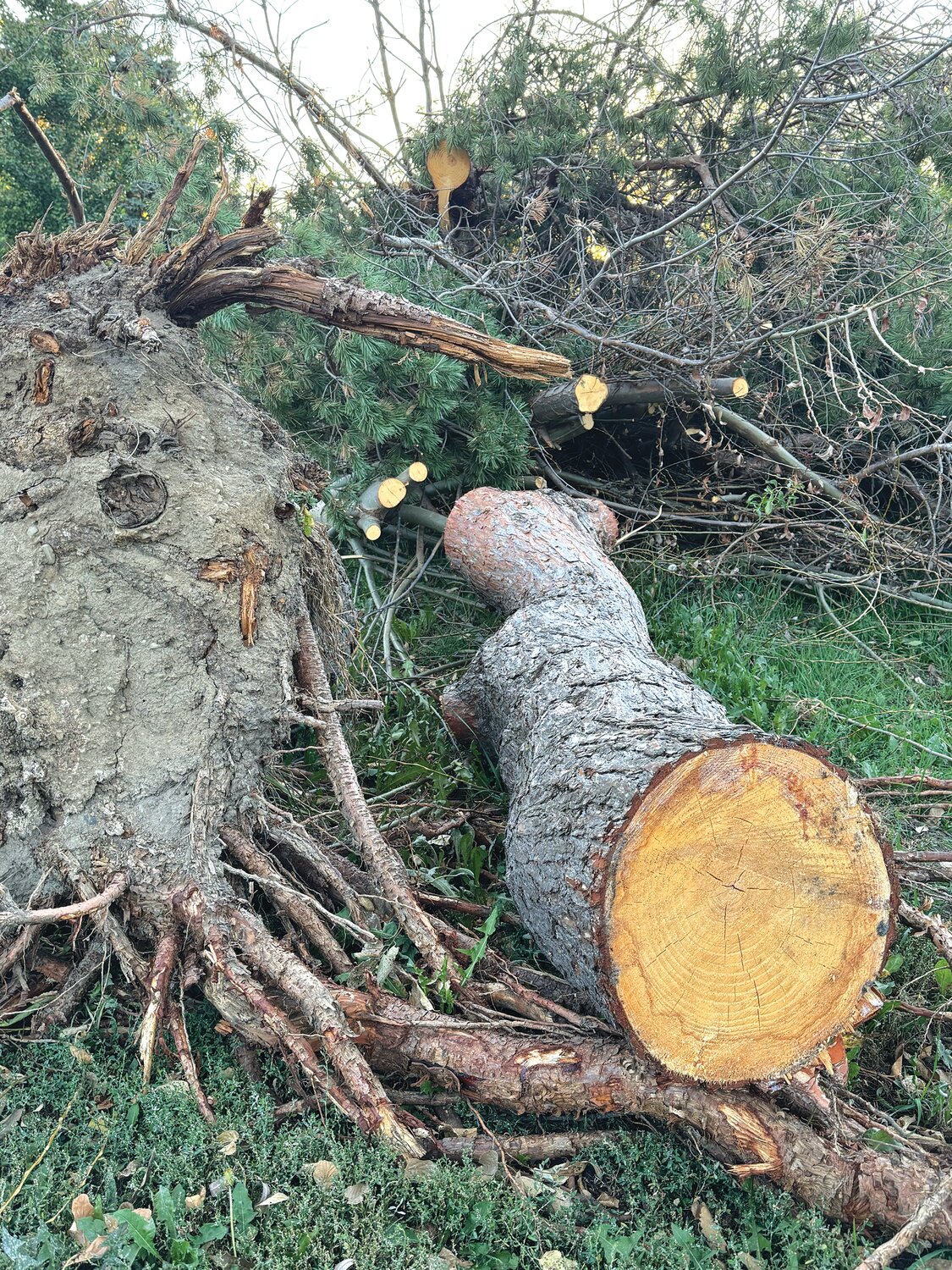
Trees are an important part of the landscape in South Minneapolis. They shade our streets and yards, provide habitat for wildlife, improve the air, and reduce the urban heat island effect. If you’ve noticed your trees looking a little worse for wear this year, you’re not alone! Read on for some reasons that 2024 was a rough year for trees, and tips to help improve tree health.
This year has been a year of weird weather. This winter was one of the mildest in recorded history, with December through February breaking statewide records for high average temperatures. This spring and summer, we set records for high rainfall totals in April, May, June, and July, while also experiencing lower than average temperatures. These unusual conditions have affected trees in a variety of ways.
First, many trees were already struggling to overcome the effects of last year’s historic drought. Very dry conditions like we had last year can harm tree roots, cause premature loss of leaves, and damage cell structures needed for proper water regulation, among other issues. This stresses trees, reducing their overall health and making them more susceptible to diseases and pests.
Over the winter, unusually mild conditions led some trees to begin putting out buds too early, which were killed later in the season by colder temperatures. Also, our typical cold winters help control pests like emerald ash borers (which cause serious damage to ash trees) and sap beetles (which spread oak wilt). A lack of cold temperatures has allowed those pests to thrive in many areas of the state.
Then, this summer, we experienced record-setting rainfall totals along with unusually chilly temperatures for most of the season. These are ideal conditions for a variety of bacterial and fungal diseases to spread, including apple scab, fire blight, and anthracnose.
As you can see, our trees have been up against some challenges this year, so it’s no surprise that pests and diseases are more common than usual right now. Apple and crabapple trees have been heavily affected by apple scab, a fungal disease characterized by spotted or scabbed leaves, and fire blight, a bacterial disease causing malformed leaves and shriveled fruit. If you suspect that your apple tree is afflicted with either of these diseases, be sure to clean up as many fallen leaves as you can this winter to reduce the chance of the disease returning next year. Fungicide sprays can be used as a preventative measure for apple scab early next season.
Anthracnose is a fungal disease most common on trees in shady areas. You may notice leaf spots, or cupping and curling leaves. Anthracnose is not usually fatal to a tree, but again, it’s recommended to clean up as many leaves as possible in the fall to avoid the disease returning in the spring.
Oak wilt is a more serious fungal disease primarily spread by insects, and leads to the death of many oak trees throughout Minnesota. Look out for prematurely browning leaves, particularly if leaves have brown edges and green centers. You may also see discoloration of the bark or the underlying wood if bark is peeled back. It’s unfortunately pretty difficult to stop oak wilt once a tree is infected. If you suspect that an oak tree is afflicted with oak wilt, it’s recommended that you contact an experienced tree care professional to discuss options for reducing the spread to other nearby oak trees.
These are several of the most common tree issues, but if you have questions about a specific tree in your yard, I would recommend checking out the “What’s Wrong With My Plant?” page on the University of Minnesota Extension website. This helpful tool will guide you through a series of questions about the issues you’re seeing on your trees (and any other type of plant) and give you great advice and resources specific to your situation.
For more information, check out the University of Minnesota Extension Yard and Garden website. Extension resources are written by experts and contain the latest and most reliable research-based information. Happy gardening!
Comments
No comments on this item Please log in to comment by clicking here